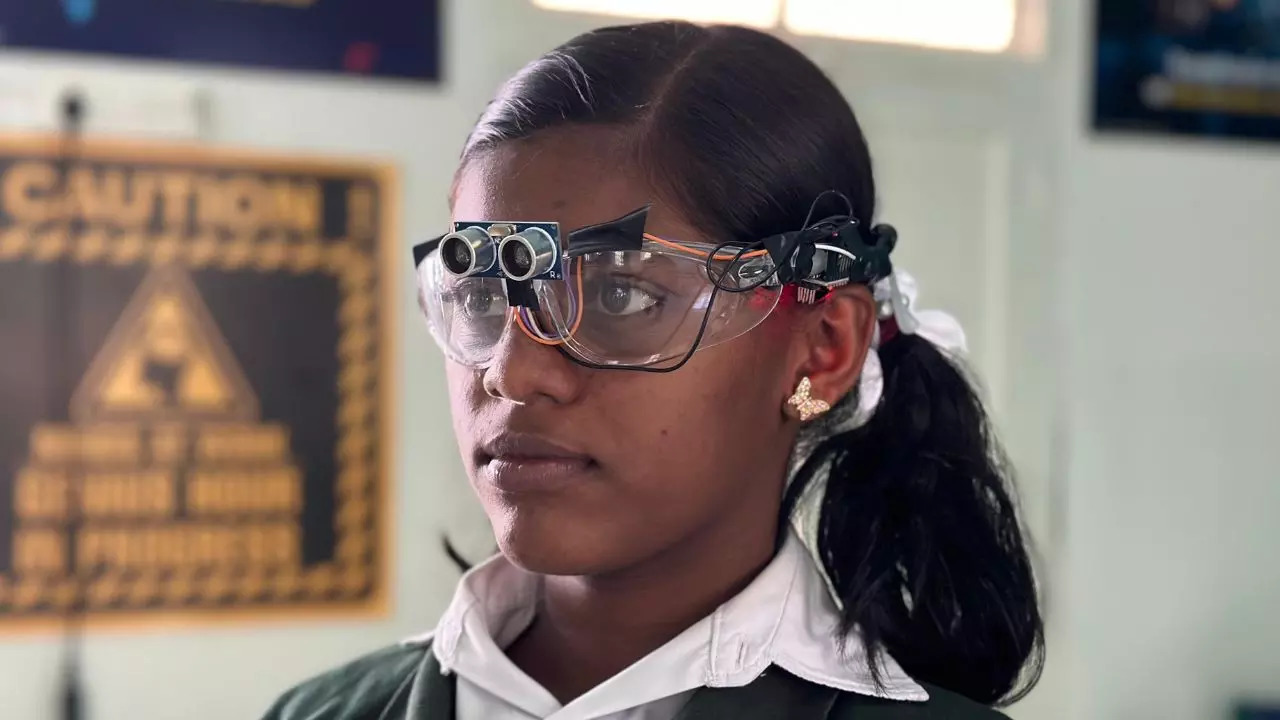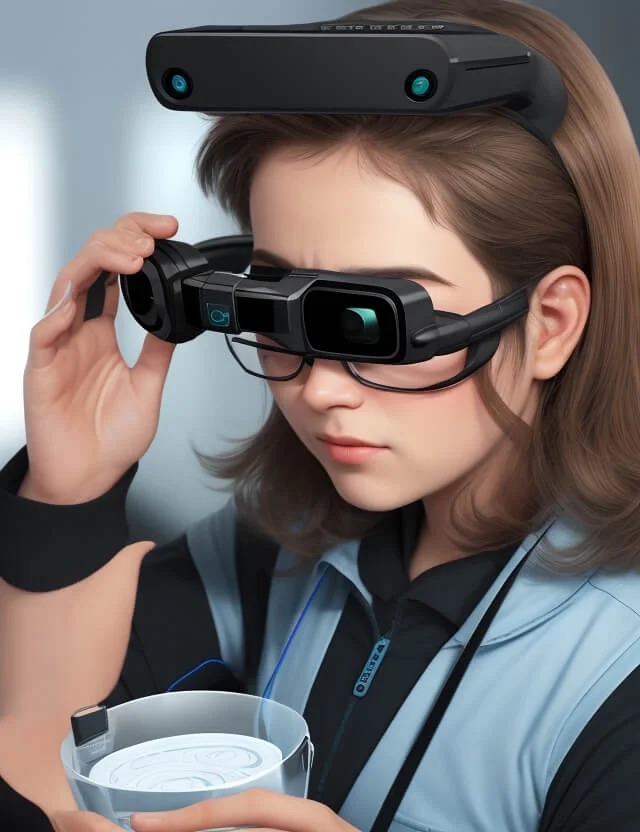Discover Advanced Assistive Gadgets for Individuals With Visual Impairments
The landscape of assistive innovation for individuals with visual impairments is evolving swiftly, offering a variety of ingenious devices that improve freedom and interaction. From clever glasses that flawlessly merge aesthetic input with auditory assistance to sophisticated navigation applications that redefine spatial recognition, these devices are reshaping possibilities.
Smart Glasses Innovations
Smart glasses stand for a significant improvement in assistive modern technology for people with visual problems. These cutting-edge gadgets incorporate numerous attributes created to boost the user's communication with their environment. Furnished with cams and sensing units, clever glasses can record real-time visual details, which is after that processed and shared to the individual with sound responses or haptic feelings. This functionality permits individuals to receive immediate descriptions of their environments, improving their capacity to involve and browse with the world.
Additionally, advancements in synthetic knowledge have further enhanced the capacities of clever glasses. Device knowing algorithms can identify faces, checked out text, and determine items, making them indispensable devices for daily jobs. Customers can receive auditory hints that offer context regarding their atmosphere, promoting freedom and confidence.
Furthermore, the ergonomic layout and light-weight nature of numerous wise glasses make them ideal for prolonged use, making sure comfort while boosting performance. As these devices continue to develop, they hold the potential to transform the way people with visual impairments experience their lives, bridging the space in between ease of access and innovation. The recurring research study and growth in this field guarantee to broaden the possibilities for smart glasses, making them a necessary part of contemporary assistive devices.
Navigating Application and Tools
Countless navigating apps and devices have arised as essential sources for people with aesthetic problems, considerably enhancing their capability to traverse strange environments. These technologies utilize GPS capability, audio cues, and real-time information to supply users with specific navigation help.
One prominent instance is the Aira application, which attaches customers to trained agents that can provide visual summaries of environments and navigation support with a real-time video feed. This solution boosts the user's spatial awareness and self-confidence while browsing. One more remarkable device is Seeing Eye GPS, which offers voice-guided navigation and points of passion, allowing users to gain access to essential details concerning their environments.

As technology remains to advancement, the advancement of a lot more sophisticated navigation devices promises to further encourage people with aesthetic problems, helping with smooth movement and combination into diverse settings. Such innovations are critical in promoting a more comprehensive society.
Braille Innovation Advancements
In recent times, improvements in Braille modern technology have actually substantially changed how people with visual problems access info and engage with the globe around them. The development of mobile Braille displays has actually reinvented reading by allowing individuals to connect wirelessly to tablet computers, computer systems, and smartphones. These gadgets convert message into Braille in real-time, enabling smooth interaction with digital material.
Furthermore, innovative Braille printers have arised, enhancing the optometry future outlook production of responsive materials. Modern embossers are faster and a lot more effective, permitting for the rapid development of Braille records and educational products. This efficiency decreases the time and expense related to generating Braille sources, making them much more accessible to organizations and colleges.
Additionally, the integration of Braille with other innovations, such as fabricated knowledge and equipment understanding, has actually opened brand-new avenues for individualized learning experiences. Voice recognition and synthesis technologies can enhance Braille, offering a comprehensive method to details circulation.
As the need for comprehensive education and learning and office settings expands, these technological improvements play a vital duty in navigate here empowering people with visual impairments, ensuring they have equivalent accessibility to details and chances in different facets of life.
Wearable Instruments for Freedom
An expanding variety of wearable gadgets is improving freedom for individuals with aesthetic impairments, providing innovative services that enhance navigation and day-to-day living. Braille displays and notetakers. These tools use innovative modern technologies to provide real-time feedback and support, advertising freedom in different settings

Wearable technology likewise includes smartwatches that can be programmed with availability features, making it possible for customers to receive alerts, track their places, or perhaps call for help with the touch of a switch. In addition, some gadgets incorporate man-made intelligence to examine the environment, offering sound summaries of nearby objects or individuals.
Voice-Activated Assistive Solutions
Leveraging voice-activated assistive services has changed the landscape of assistance for individuals with aesthetic disabilities, giving hands-free communication and access to a range of tasks. These innovations utilize natural language processing and man-made knowledge to allow individuals to perform day-to-day activities through easy voice commands.

Moreover, recent innovations in voice recognition precision have actually improved the customer experience significantly, accommodating varied accents and speech patterns. This inclusivity makes sure that more people can gain from these technologies, fostering a better sense of autonomy.
Final Thought
To conclude, the growth of advanced assistive gadgets significantly boosts the self-reliance and lifestyle for individuals with visual impairments. Innovations such as wise glasses, navigation applications, Braille technology, wearable devices, and voice-activated options jointly promote an even more comprehensive atmosphere. These modern technologies empower customers to browse their surroundings with self-confidence and involve more fully with the world, inevitably promoting better availability and level playing fields for people facing visual challenges.
The landscape of assistive modern technology for people with aesthetic impairments is evolving quickly, presenting an array of innovative devices that enhance freedom and interaction.Smart glasses represent a considerable improvement in assistive innovation for individuals with visual impairments. As these devices proceed to evolve, they hold the prospective to reinvent the means individuals with aesthetic disabilities experience their everyday lives, bridging the void between accessibility and modern technology.In recent years, advancements in Braille modern technology have actually dramatically changed exactly how people with visual disabilities gain access to details and involve with the world around them. These modern technologies encourage individuals to navigate their surroundings with confidence and involve even more totally with the globe, eventually promoting better availability and equivalent chances for people dealing with aesthetic obstacles.